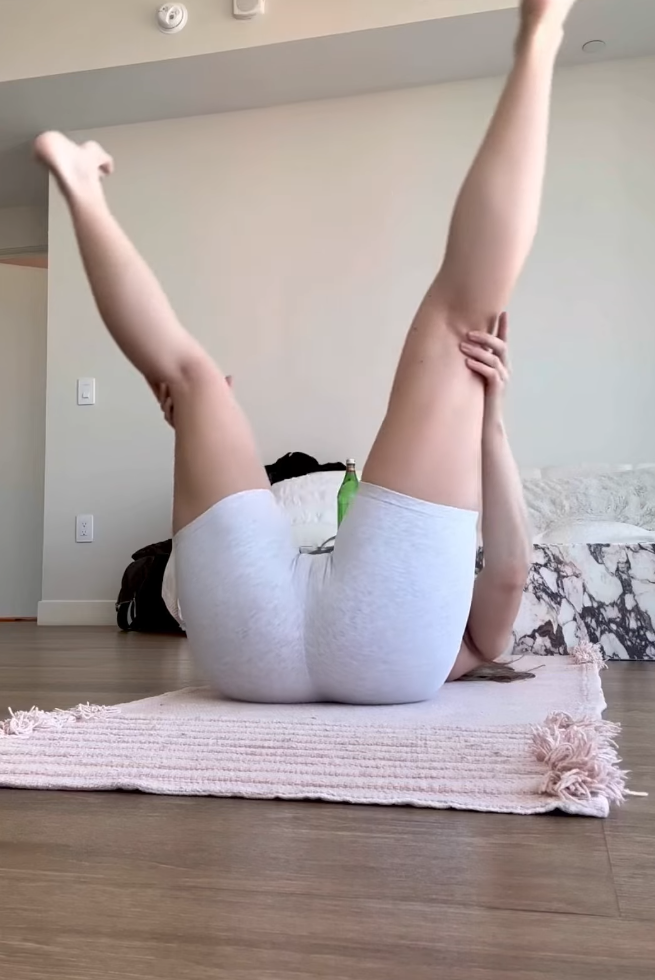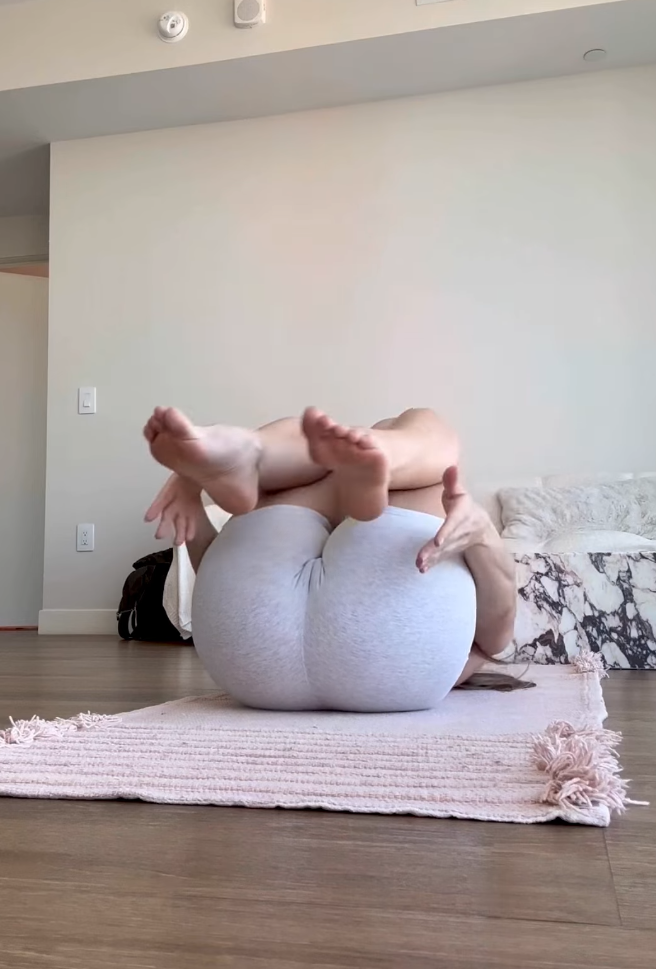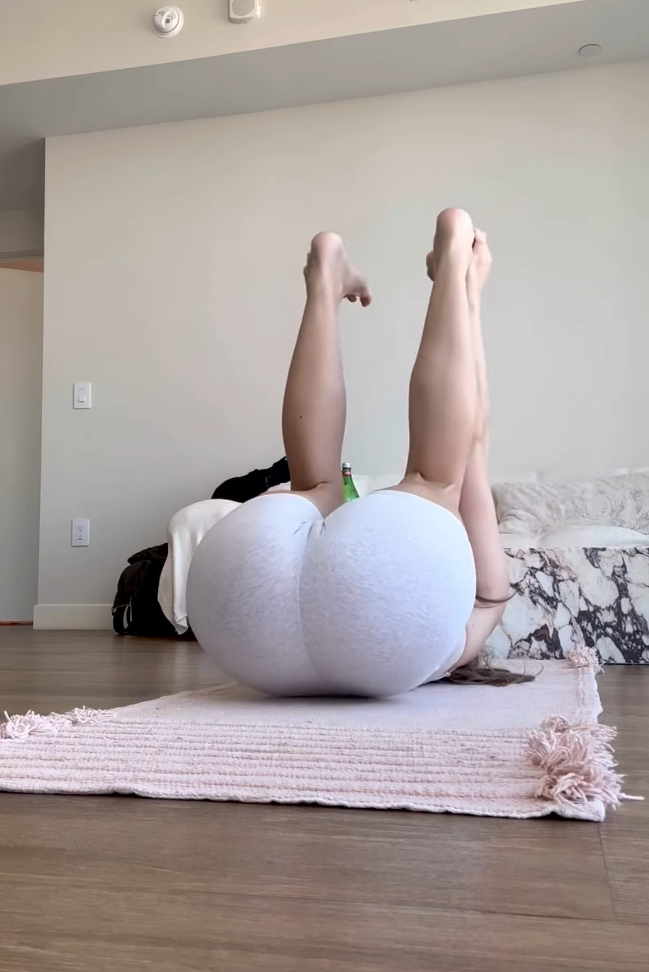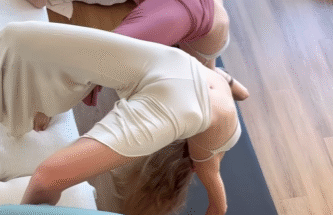Yoga is a profound practice that enhances flexibility, strength, and mental well-being. Among the many sequences and transitions, moving from a Split Stretch to the Happy Baby Pose offers an excellent way to deepen flexibility, release tension, and calm the mind. This transition targets the hamstrings, hips, and lower back while promoting relaxation. Whether you’re a seasoned yogi or a beginner, learning to flow smoothly between these poses can enrich your practice and bring a sense of balance to your body.


Understanding the Poses
Split Stretch (Hanumanasana)
The Split Stretch, or Hanumanasana in Sanskrit, is named after Hanuman, the monkey god from Hindu mythology, who made a giant leap from India to Sri Lanka. This pose requires deep flexibility in the hamstrings, hip flexors, and groin muscles. Performing the Split Stretch regularly can increase lower body flexibility and strengthen the core.


How to Perform the Split Stretch:
- Begin in a Low Lunge with your right foot forward and your left knee on the ground.
- Slowly extend your right leg forward, straightening it as much as possible.
- Begin sliding your left leg back until your hips lower toward the floor.
- Keep your hands on blocks or the floor for support, ensuring your hips remain squared.
- Engage your core, breathe deeply, and hold the pose for 20-30 seconds


Benefits of the Split Stretch:
- Improves hamstring and hip flexibility.
- Strengthens the quadriceps and core muscles.
- Enhances balance and body awareness.
- Prepares the body for deeper stretches and advanced poses.
Happy Baby Pose (Ananda Balasana)
The Happy Baby Pose is a grounding and restorative pose that opens the hips and relieves lower back tension. This pose is inspired by the way babies joyfully grasp their feet, allowing the hips to naturally open.
How to Perform Happy Baby Pose:
- Lie on your back with your knees bent and feet flat on the floor.
- Bring your knees toward your chest and grab the outer edges of your feet.
- Open your knees wider than your torso, keeping your feet flexed.
- Gently pull your feet toward your armpits while pressing your lower back into the ground.
- Breathe deeply and hold the pose for 30-60 seconds.
Benefits of Happy Baby Pose:
- Opens the hips and inner thighs.
- Relieves lower back pain and tension.
- Encourages deep relaxation and stress relief.
- Enhances flexibility in the pelvic area.
Transitioning from Split Stretch to Happy Baby Pose
Now that we understand each pose individually, let’s explore how to transition between them smoothly and safely.
Step-by-Step Transition:
- From Split Stretch, engage your core to maintain balance as you slowly shift your weight backward.
- Bend the back leg slightly and bring the front leg back to a comfortable seated position.
- Lower your body onto your back using control and mindful movement.
- Draw both knees into your chest to release any tension from the stretch.
- Move into Happy Baby Pose by grabbing the outer edges of your feet and gently opening your hips.
- Hold Happy Baby Pose for 30-60 seconds, allowing your breath to deepen and your body to relax.
This transition is effective in releasing any tightness built up during the Split Stretch while promoting relaxation in the hips and lower back.
Modifications and Variations
Yoga is a practice meant for all bodies, so feel free to modify the transition as needed.
For Beginners:
- Use yoga blocks under your hands for support during the Split Stretch.
- Keep a slight bend in your front knee if full splits feel too intense.
- In Happy Baby Pose, hold your shins instead of your feet for a gentler stretch.
For Advanced Practitioners:
- Try lifting your upper body in Happy Baby Pose, engaging your core for added strength.
- Experiment with rocking side to side in Happy Baby Pose to deepen the hip stretch.
- After the Split Stretch, go into a Seated Forward Fold before transitioning to the Happy Baby Pose.
Breathwork and Mindfulness in the Transition
Breathing plays a crucial role in achieving a smooth transition. Focus on deep, steady breaths:
- Inhale deeply while stretching into the Split Stretch.
- Exhale slowly as you move out of the split and prepare for the transition.
- Take calming breaths in Happy Baby Pose, allowing your body to fully relax.
Mindfulness enhances this flow by helping you stay present. Notice where you feel resistance and use the breath to soften those areas.
Precautions and Safety Tips
- Always warm up before attempting deep stretches like the Split Stretch.
- Move slowly and with control to avoid injury.
- Listen to your body—never force a stretch beyond your current flexibility level.
- If you feel discomfort in the knees or lower back, adjust your positioning or use props.
Conclusion
The Split Stretch to Happy Baby Pose transition is a beautiful combination of flexibility and relaxation. By practicing these poses regularly, you’ll not only improve your mobility but also develop a deeper connection with your breath and body. Whether you’re seeking increased flexibility or simply a moment of calm, this sequence offers both physical and mental benefits. So roll out your mat, take a deep breath, and enjoy the journey of movement and mindfulness!



